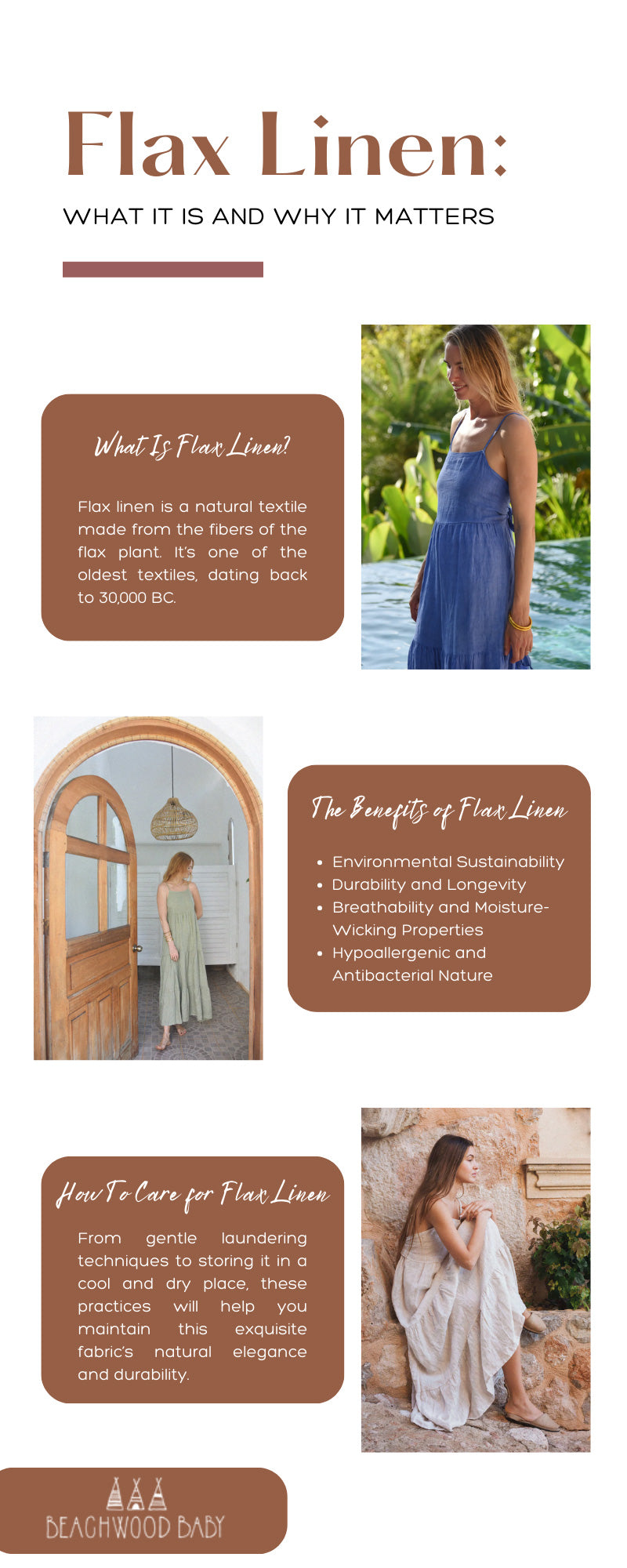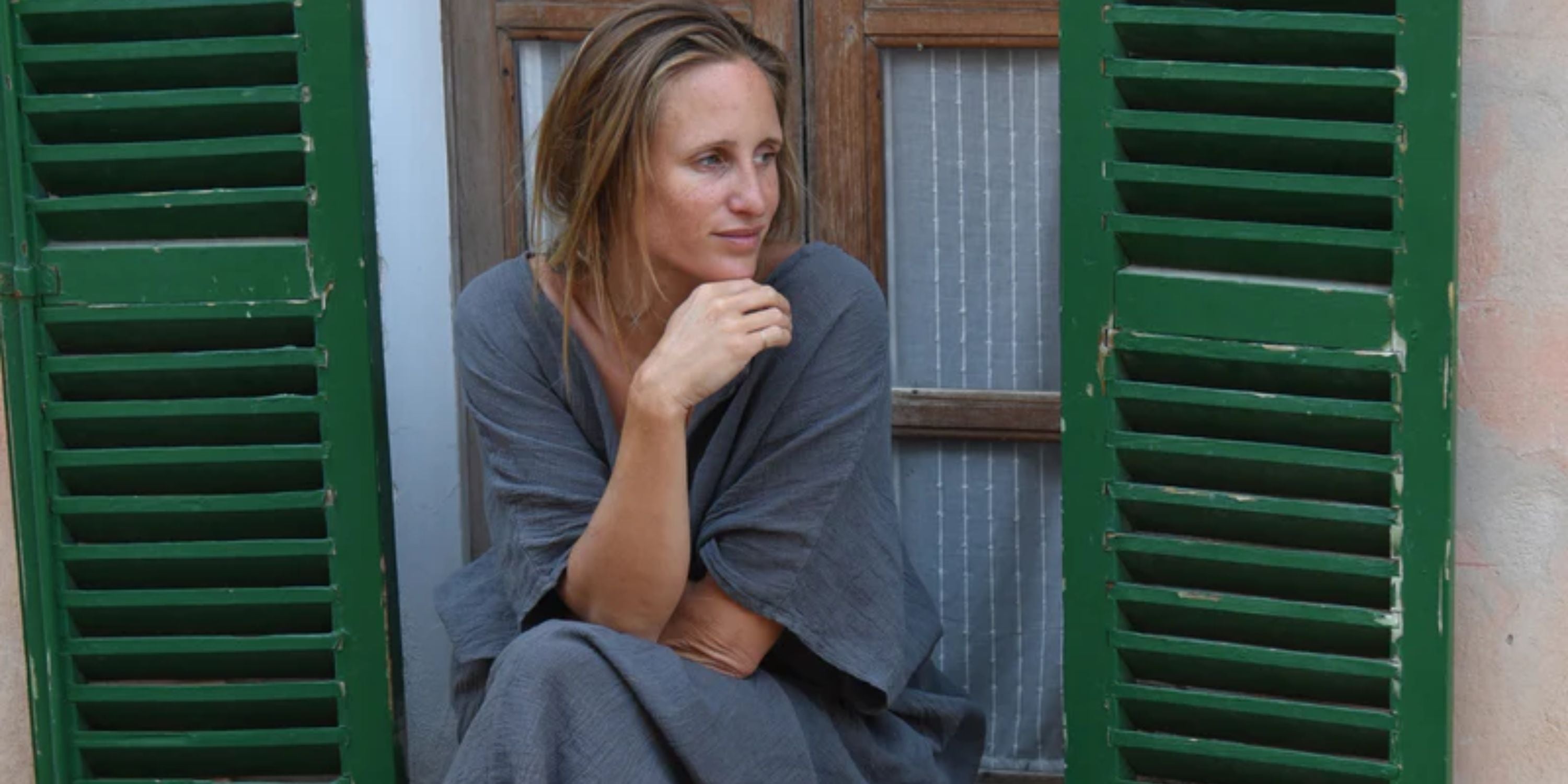
Flax Linen: What It Is and Why It Matters
In the quest for sustainability and eco-friendliness, the fashion industry is turning over a new leaf. Flax linen, once an ancient textile staple, is now making a resounding comeback. Renowned for its durability, breathability, and earth-friendly production, flax linen captures the hearts of sustainable fashion advocates and eco-conscious consumers.
But what is flax linen, and why is it causing such a buzz? And most importantly, why should we care? This complete guide dives into the world of flax linen: what it is and why it matters.
What Is Flax Linen?
Flax linen is a natural textile made from the fibers of the flax plant. It’s one of the oldest textiles, dating back to 30,000 BC. The fabric has superb properties; it’s stronger than cotton, naturally lustrous, and becomes softer with each passing wear and wash.
Compared to other fabrics, flax linen stands out for being impermeable to dust and resistant to degradation by sunlight. This makes it an excellent choice for various applications, from clothing to homewares. Since flax plants grow in poor soil conditions and don’t require irrigation, the fabric is more sustainable than many alternatives.
The Benefits of Flax Linen
Linen captivates with its multitude of merits. Its breathability and moisture-wicking properties ensure unparalleled comfort, while its durability and resistance to wear and tear make it a fabric of choice for those seeking long-lasting quality. Whether it’s the crispness of freshly laundered linen or the gentle softness that comes with time, this fabric embodies an enduring charm that never goes out of style.
Environmental Sustainability
In a world grappling with climate change, environmental sustainability is non-negotiable. Flax linen leads the charge as a fabric that’s been green long before it was trendy. Unlike cotton, which is water-thirsty and requires a significant amount of pesticides, flax linen grows naturally, with very little reliance on artificial assistance. Linen production generates little to no waste—truly embodying the zero-waste ethos.
Durability and Longevity
A well-known fact among linen aficionados is that a well-maintained linen garment can last for decades. The fabric’s natural strength and abrasion resistance mean that linen products outlast many others, reducing the need for frequent replacements.
Breathability and Moisture-Wicking Properties
Linen’s unique structure and composition give it exceptional breathability, making it an ideal choice for the hot and humid. Unlike synthetic fabrics, linen allows air to circulate around the body, helping to evaporate sweat and keep the wearer cool and comfortable.
Hypoallergenic and Antibacterial Nature
Linen’s hypoallergenic properties make it a boon for those with sensitive skin. Its antibacterial nature is a buffer against various skin irritations and allergies, a benefit that polyester and other synthetic fabrics can’t boast.
The Flax Linen Production Process
Understanding the process that takes place, from the growth of the flax plant to the transformation into luxurious linen fabric, provides an appreciation for the exceptional qualities of flax linen.
Cultivation and Harvesting of Flax Plants
The flax plant grows in temperate climates around the world. It’s a relatively low-maintenance crop, requiring substantially less water and pesticides than cotton. Harvesting occurs when the plant is at peak ripeness, typically right before the seeds begin to fall.
Retting and Extraction of Flax Fibers
Retting involves exposing the flax plants to moisture, which causes the stem to break down the plant. This allows for the separation of the valuable fibers from the rest of the plant. Traditional retting methods involve soaking the stems in water, while modern processes use machinery and chemicals to speed up the process.
Spinning and Weaving of Linen Fabric
Next is the process of spinning the flax fibers into yarn before weaving them into linen fabric. The weaving process is highly labor-intensive, especially if producing high-quality linen that requires a tight weave. The finished fabric is then ready for the dyeing and finishing stages.
Dyeing and Finishing Processes
Dyeing adds color to the fabric, but it can also be a source of significant environmental impact due to synthetic dyes. Eco-friendly alternatives, such as plant-based dyes, are becoming more popular. The finishing step involves treatments that can affect the texture and functionality of the fabric, like softening or increasing wrinkle resistance.
Flax Linen in Sustainable Fashion
With the rising demand for sustainable and eco-friendly materials, flax linen has become a darling of the sustainable fashion movement. Sustainability isn’t a mere buzzword for linen—it’s an integral part of the fabric’s DNA.
Impact on the Fashion Industry’s Carbon Footprint
The fashion industry has had a notorious carbon footprint, with synthetic fibers and complex dye processes contributing to environmental degradation. Flax linen’s cultivation and production processes are inherently less harmful, significantly reducing greenhouse gas emissions.
Ethical and Fair Trade Practices in Flax Linen Production
Sustainable fashion isn’t just about the environment; it’s also about social responsibility. Many flax linen producers embrace fair trade practices, ensuring fair treatment and pay to all parties involved in the production process.
How To Care for Flax Linen
Proper care and maintenance are essential to preserve the beauty and integrity of flax linen. By following a few simple steps, you can ensure that your flax linen remains in pristine condition for years to come. From gentle laundering techniques to storing it in a cool and dry place, these practices will help you maintain this exquisite fabric’s natural elegance and durability.
Washing and Drying Instructions
You should wash linen in cool water using a mild detergent. Preferably, you should line-dry it to prevent shrinkage. Avoid over-crowding in the washing machine to allow for proper rinsing and circulation of water.
Storage Recommendations for Longevity
Properly storing linen in a cool and dry place is crucial to prevent mold or mildew growth. Store linen in a breathable fabric, such as cotton, to allow for adequate air circulation. This maintains the freshness and quality of the linen and contributes to its longevity and overall durability. By taking these simple yet effective measures, you can ensure that your linen remains in pristine condition for years to come.
As we reflect on the journey from the flax field to our homes, one thing is clear: flax linen isn’t just a fabric. It’s a symbol of our choices as consumers and our commitment to a sustainable future. With this complete guide to flax linen and its benefits, you can better understand why this fabric is so special. Check out Beachwood Baby’s selection of linen clothes online today. Embracing flax linen can make a tangible difference to the planet and future generations.



